The Genius of Gustav Klimt
Today I would like to showcase some of the artworks of the Austrian artist, Gustav Klimt, who was born in 1862, and died on 6th February 1918. I bet you will recognise some of his work, even if you don't know his name, as his work is amongst some of the most reproduced in the world. See how many of the following artworks you recognise!
It’s opportune to mention Gustav Klimt now, as we welcomed our first subscriber from Austria a little while ago, and we also want to mention the completion of Bordeaux’s first digital art centre, in which the first exhibition will be the art of Gustav Klimt. Unfortunately this very unique exhibition has not been able to open quite yet, (due to current world circumstances), but we will feature it when it is launched!
Gustav Klimt was born on 14th July, 1862 to a poor family, just south of Vienna. He enrolled in the Vienna School of Decorative Arts, along with his brother Ernst. The two brothers and their friend, Franz Matsch, then began working together and by 1880 they had received numerous commissions to paint interior murals and ceilings in theatres, churches and other public buildings around Vienna.




In 1888 Klimt received the Golden Order of Merit from Emperor Franz Josef I of Austria for his contributions to murals painted in the Burgtheater in Vienna. He also became an honorary member of the University of Munich and the University of Vienna.
His artistic life has some parallels with the French Impressionists, in that he initially followed the traditional form of painting he had been trained in, but then broke away to follow his own style. Like some of the Impressionists, Klimt was also influenced by Japanese art although I couldn't find any evidence that he ever met any of the Impressionists, or was influenced by their work.
In 1890 he joined the Vienna Art Association, which was similar in its traditional and conservative philosophies to The Salon, in Paris, to which a number of the Impressionists submitted work for exhibitions.
However, in 1892, both Klimt’s father and his brother Ernst died in quick succession, leaving him financially responsible for their families and feeling totally bereft. This caused Klimt to re-evaluate his artistic career and question the conventions of classical painting.
With his brother gone, and a stylistic rift growing between Klimt and his friend and business partner Franz Matsch, their painting business dissolved. However, Klimt agreed to take one last commission with Matsch in 1894 for the ceiling of the Great Hall of the University of Vienna. He was responsible for three panels: Philosophy, Medicine and Jurisprudence. They were painted over the years from 1898 - 1907, but were never installed at the university as they were thought to be too shocking, and received with public condemnation and outrage. 'Medicine' (1901), in particular, was denounced as erotic and pornographic. Klimt was furious, which spurred him on further to pursue his own direction.
Unfortunately, all three of the panels are thought to have been destroyed when retreating German forces burned the Schloss Immendorf in May 1945, a castle to which they had been taken for safekeeping during the second world war.........
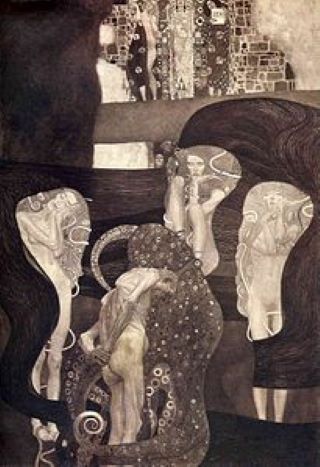



^ Only one photograph remains of the complete image of 'Medicine', thought to be taken just before it was destroyed.
^^Hygieia was one of the Asclepiadae; the sons and daughters of the god of medicine, Asclepius. Hygieia was the goddess/personification of health, cleanliness and hygiene. (Particularly topical in the current COVID environment!) 1
Five years after this father and brother’s deaths, in 1897, Klimt and twenty other artists, sculptors and architects formed the “Wiener Sezession” (the Vienna Secession). This movement rejected the Vienna art establishment’s historical, conservative approach and marked the beginning of modern art in Austria. Klimt became its first president, and from then pursued his own highly symbolic style.

Klimt is famous for his portraits of women, and in fact, women were his favourite subjects. Nevertheless, he never married.
However, he was known to have had a prolific succession of lovers, many of whom were his models in his studio, and with whom he is thought to have fathered at least fourteen children.
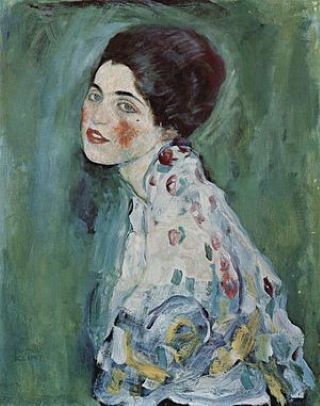

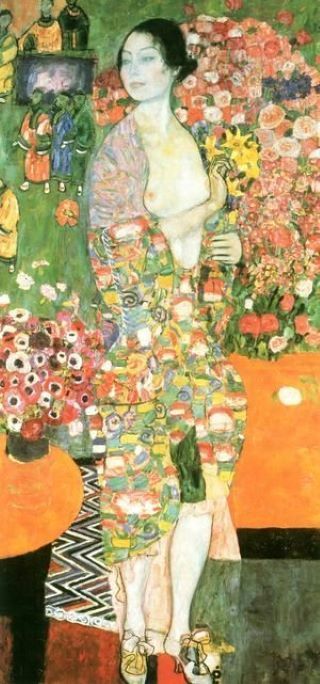




Whilst most famous for his paintings of individuals, Klimt also painted landscapes, albeit quite stylized. Whilst on holidays at Lake Attersee in Austria, he completed a number of versions of the “Schloss Kammer on Lake Attersee”.

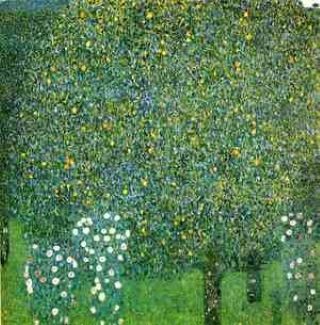



There don't appear to be any self-portraits of Klimt. He said at one point: “I am less interested in myself as a subject for painting than I am in other people, above all women.”
“Whoever wants to know something about me — as an artist, the only notable thing — ought to look carefully at my pictures and try to see in them what I am and what I want to do."
Klimt died on 6th February 1918, after falling victim to the deadly “Spanish flu”, which infected 500 million people across the globe and killed 3 to 5% of the world’s population. He suffered a stroke and other complications which led to his death at the relatively young age of just 55. He is buried in the Hietzing Cemetery in Vienna, not far from the Schonbrunn Palace.
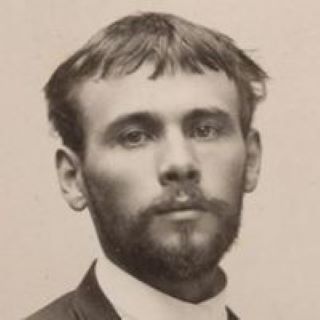

Stay tuned tomorrow for information about Klimt's most famous works of all......
If you would like to read more detail about the life of Gustav Klimt, Click here.
Footnotes
- with thanks to Wikipedia.
